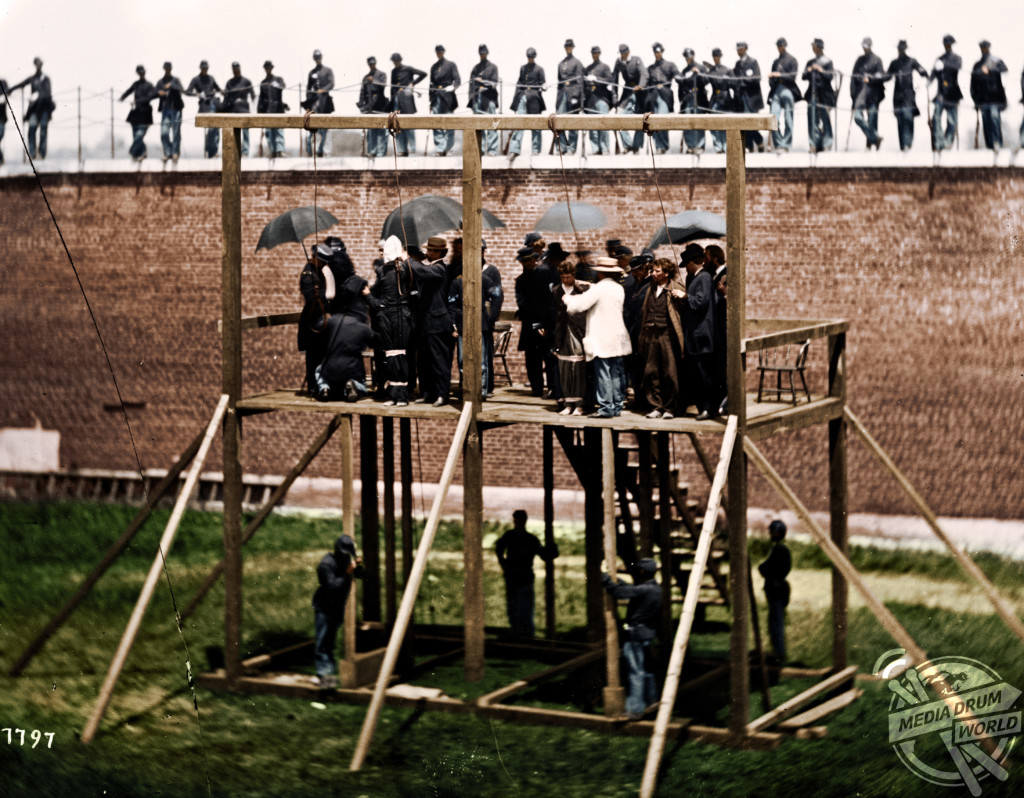
By Tom Dare
CHILLING COLOURISED IMAGES of the men involved in the successful plot to assassinate Civil War President Abraham Lincoln have emerged this week, as a book telling the story of the death of Lincoln’s 12-year-old son three years beforehand wins Britain’s prestigious Man Booker Prize.
The striking images, featured in new book ‘Retrographic: History in Living Colour,’ by author Michael Carroll, show three of the co-conspirators involved in Lincoln’s assassination looking pensive with their hands bound, with another showing a fourth man who has not been restrained.
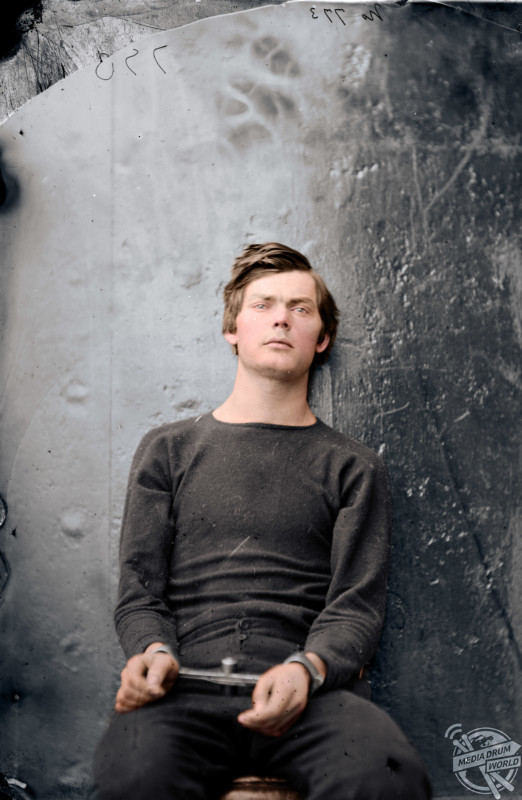
Further images from the book show the four men being fitted for nooses atop the gallows in Washington DC, while another captures what is thought to be the last photograph taken of Lincoln before his death.
President Abraham Lincoln, who had successfully lead the Union through the bloodiest period in American history, the Civil War, was shot and killed by John Wilkes Booth on April 14th, just over a month after the Confederacy had surrendered to the United States.
Booth had been working with several men including David E. Herold, Lewis Powell, George Atzerodt and Samuel Arnold, all of whom are pictured here, with each man assigned a different role in the comprehensive assassination attempt of several high-profile government members. Edmund Spangler had reportedly been responsible for helping Booth escape, though he was later killed by Union forces, while Powell had been responsible for the bungled assassination attempt of the Secretary of State, William Seward. Atzerodt had been planning an attempt of the life of the Vice President, Andrew Johnson, but is said to have lost his nerve.
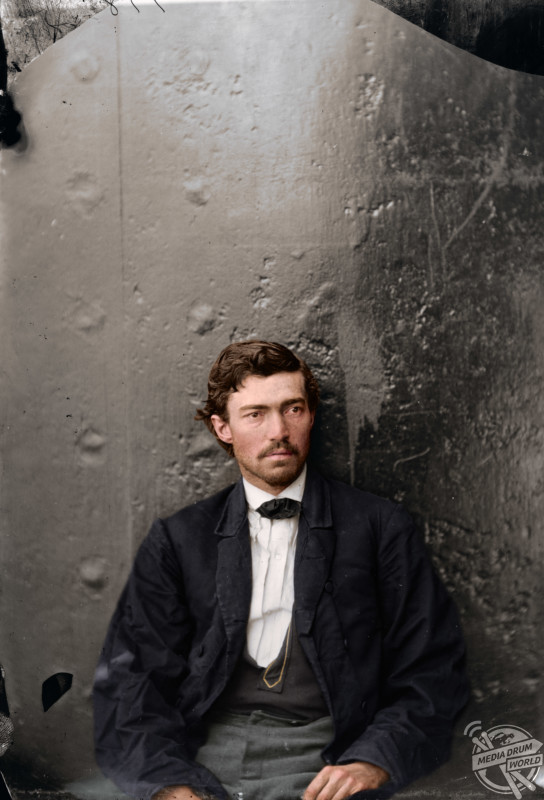
The trial of the conspirators ended on June 30 with Mary Surratt, Lewis Powell, David Herold, and George Atzerodt all sentenced to death for their roles in the plot. They were given a military trial as opposed to a civilian one, though, with much controversy over the way in which it was handled.
“The trial, under military jurisdiction, was controversial in that the defence for the accused was not given time to prepare, the accused were forbidden from testifying in their own defence, a lower level of proof was required to convict than in civilian courts, and only a majority verdict among jurors was required for the death sentence to be imposed,” says author Michael D. Carroll.
“The Southern states accused the North of imposing a military trial to avoid the opportunity for civilian jurors to show clemency towards the accused.
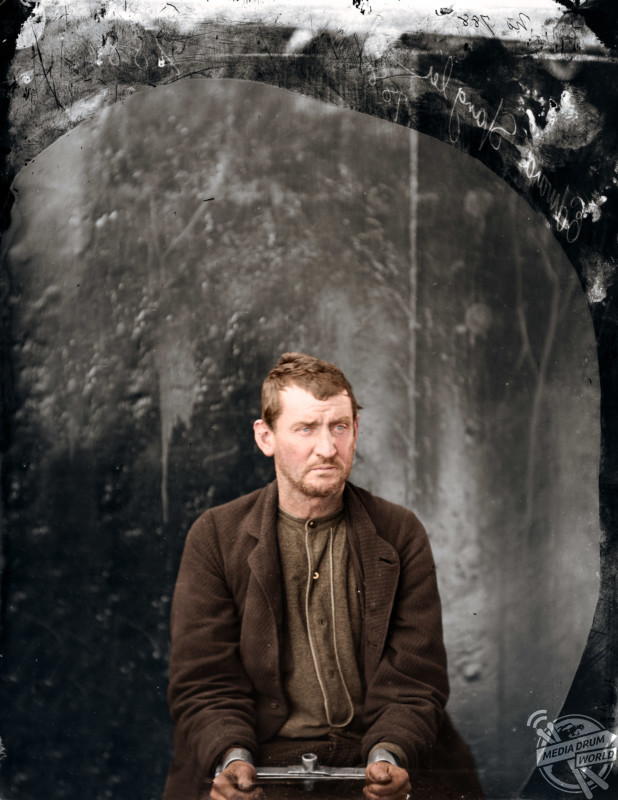
“The prisoners stood for ten seconds, before Roth clapped his hands and four soldiers below the scaffold knocked out the supports for the platform they were standing on. They dropped, with Surratt’s rope snapping cleanly, with no movement after this.
“Atzerodt heaved before falling still, but Herold and Powell, the chief conspirators, were strangled for five minutes. Powell stuggled wildly, pulling his legs up in towards his chest several times, before he was eventually still.”
George Saunders’ book ‘Lincoln in the Bardo’, about the death of Lincoln’s twelve-year-old son in 1862, was awarded the prestigious Man Booker Prize last week, making him the second American author to win the award in as many years.
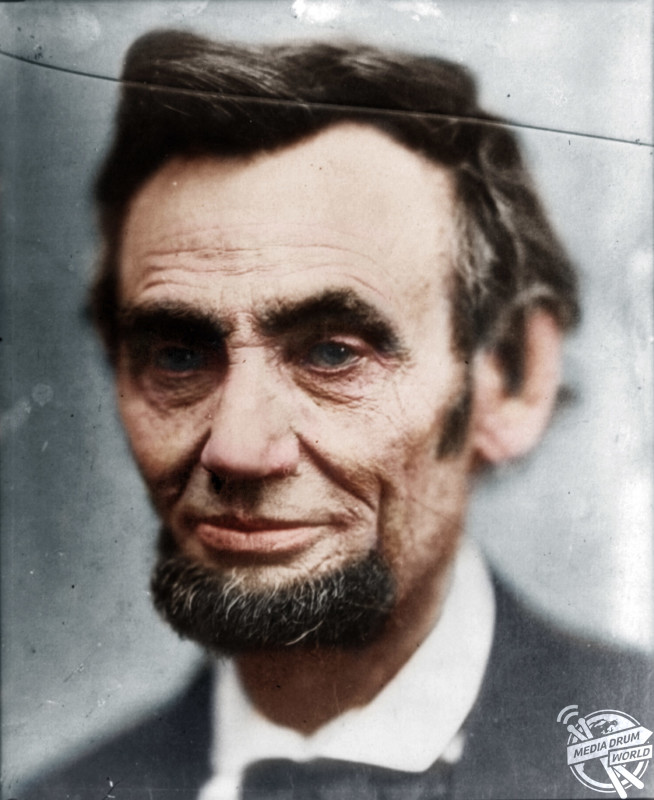
Striking images like these are featured in British author Michael D. Carroll’s new book on the colourisation of historical images. For more information visit: http://carpetbombingculture.co.uk/book/retrographic-historys-most-exciting-images-transformed-into-living-colour/






